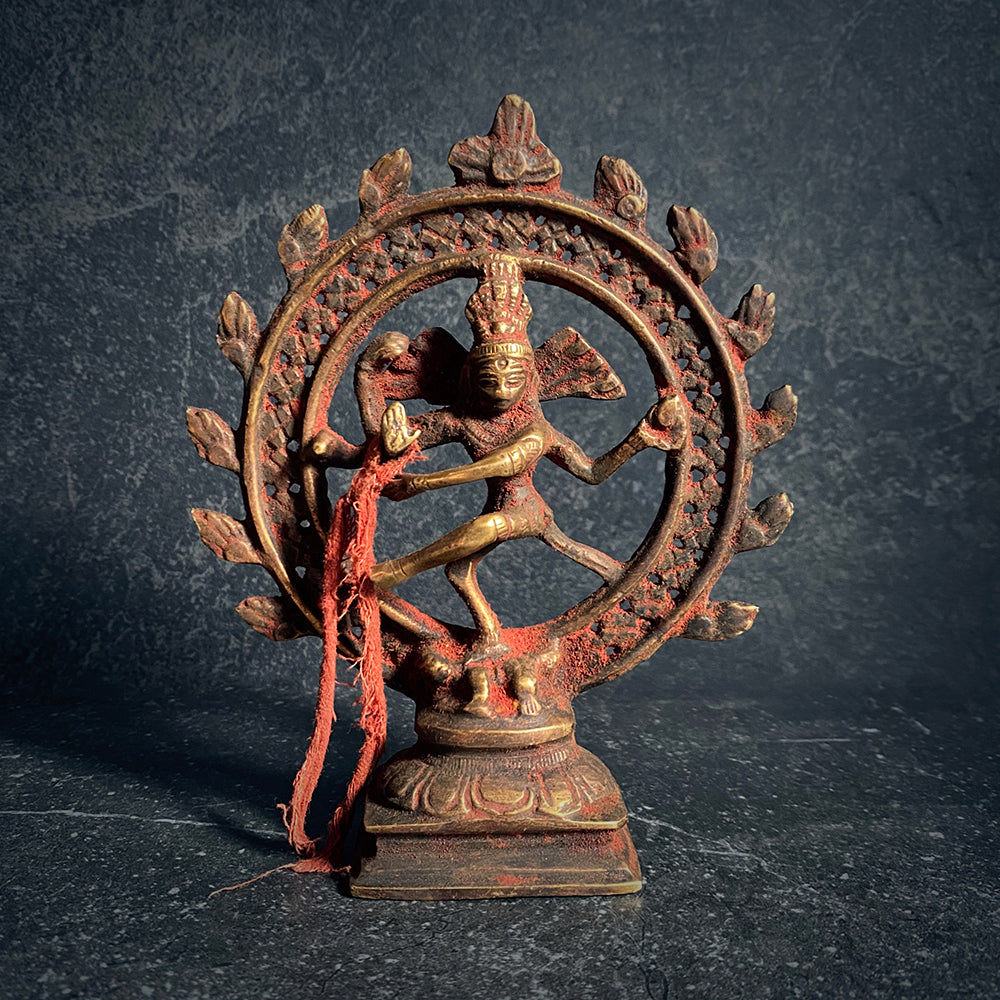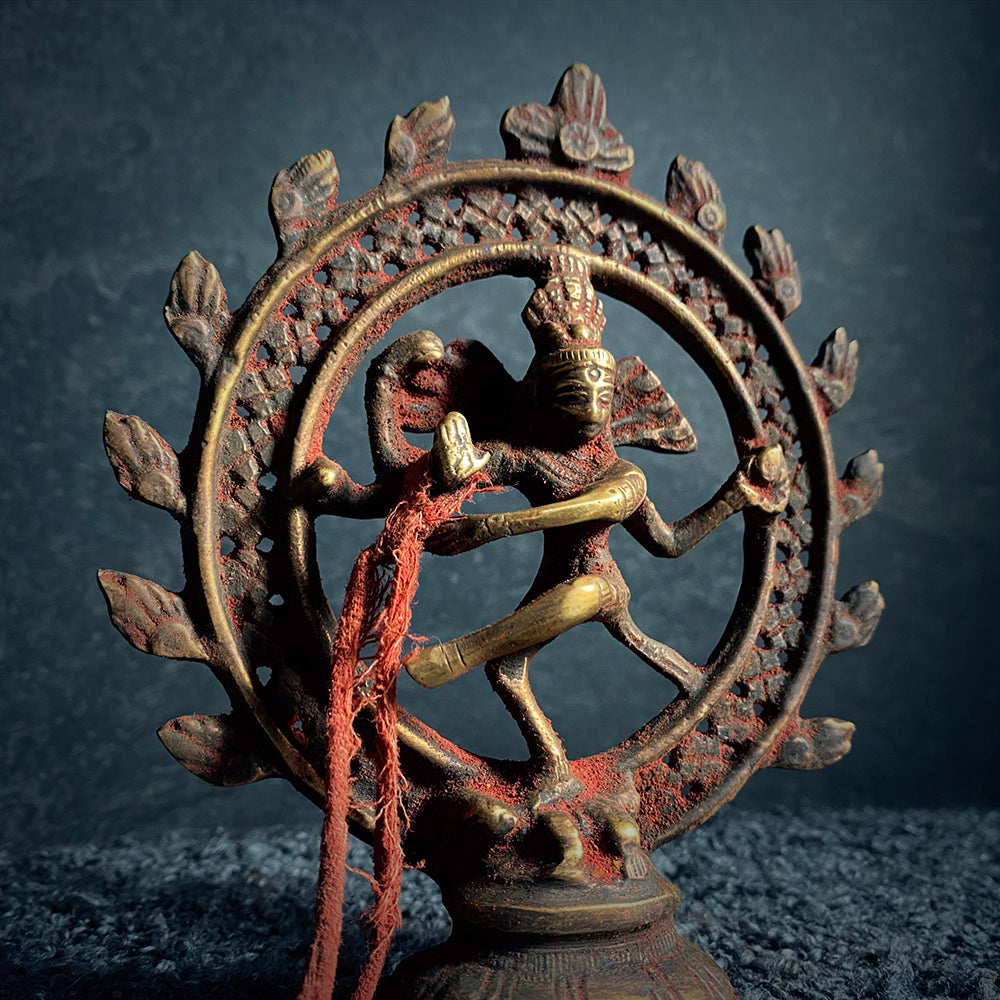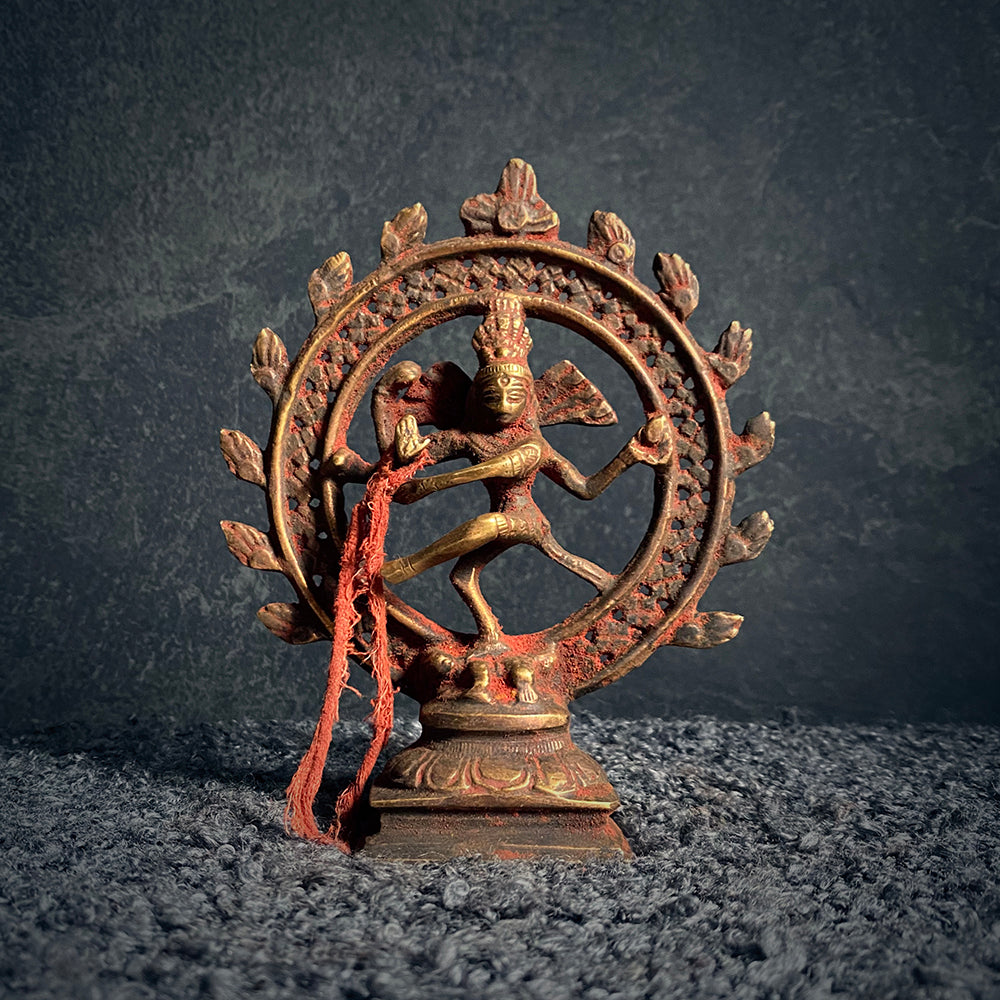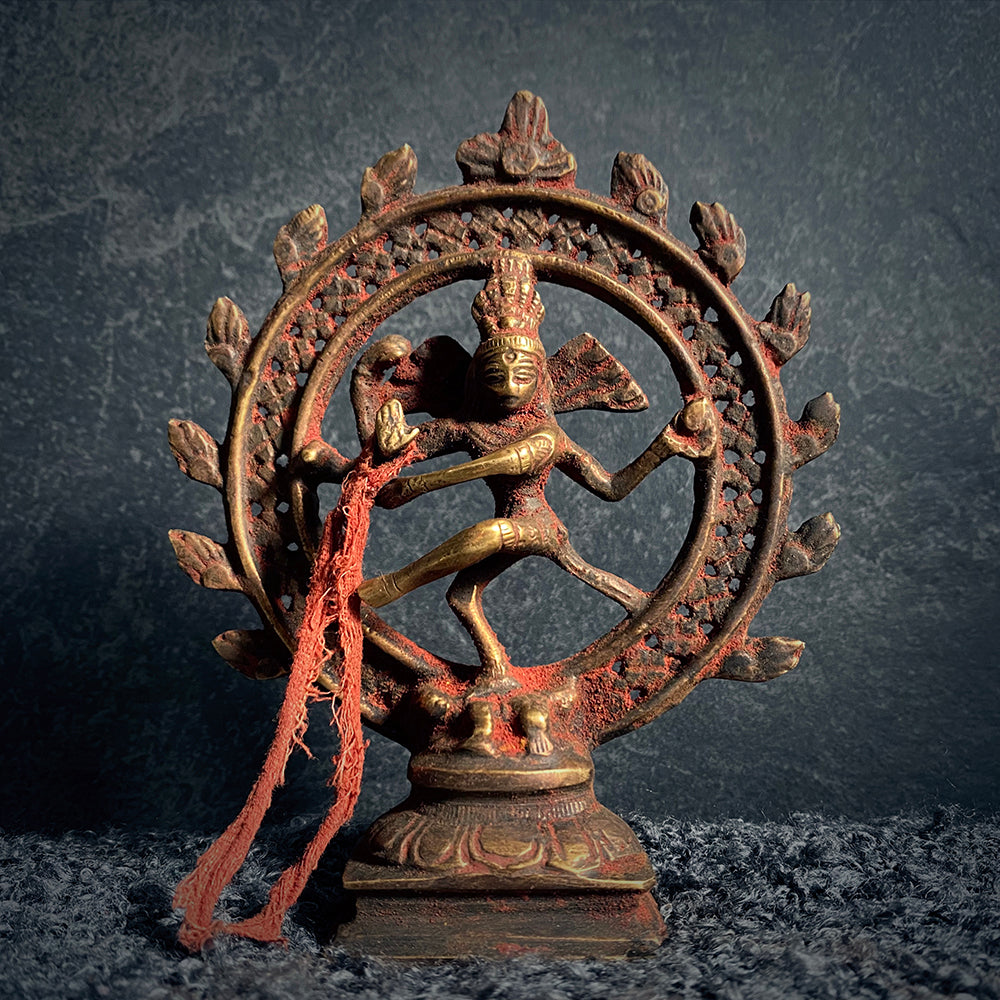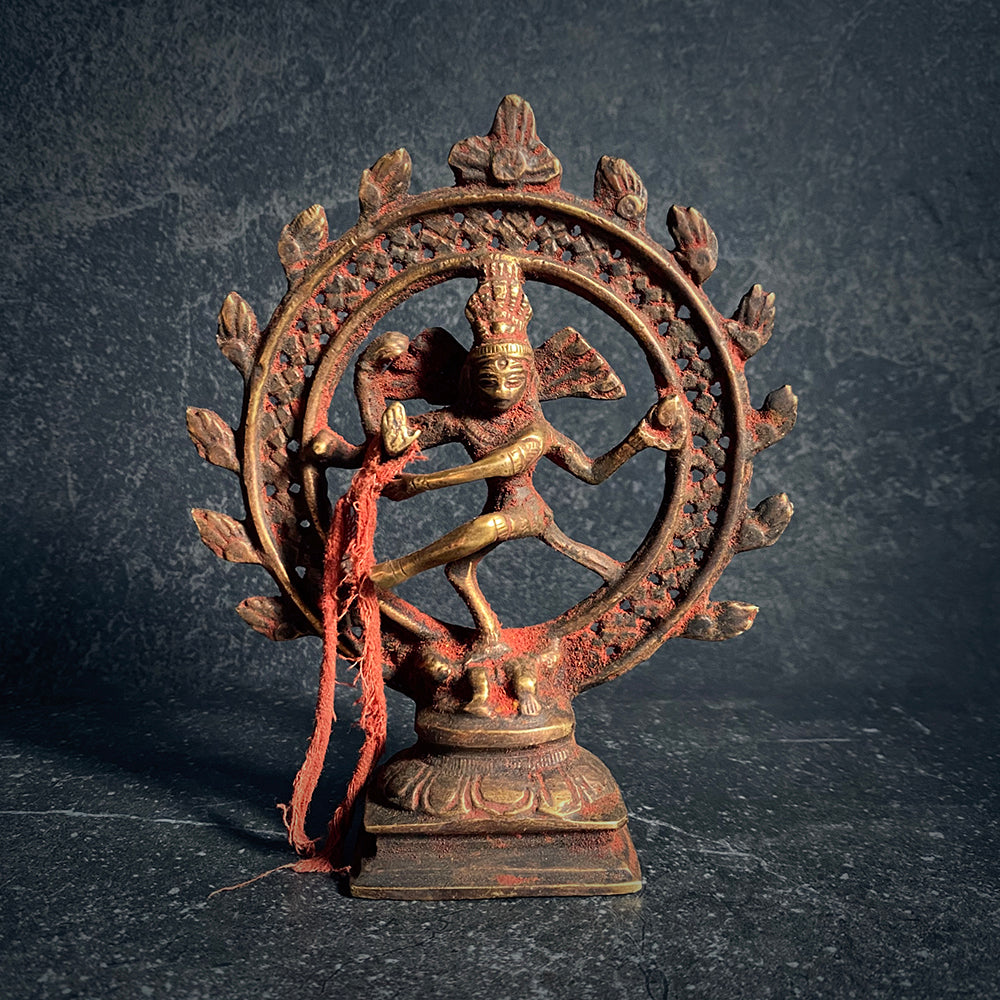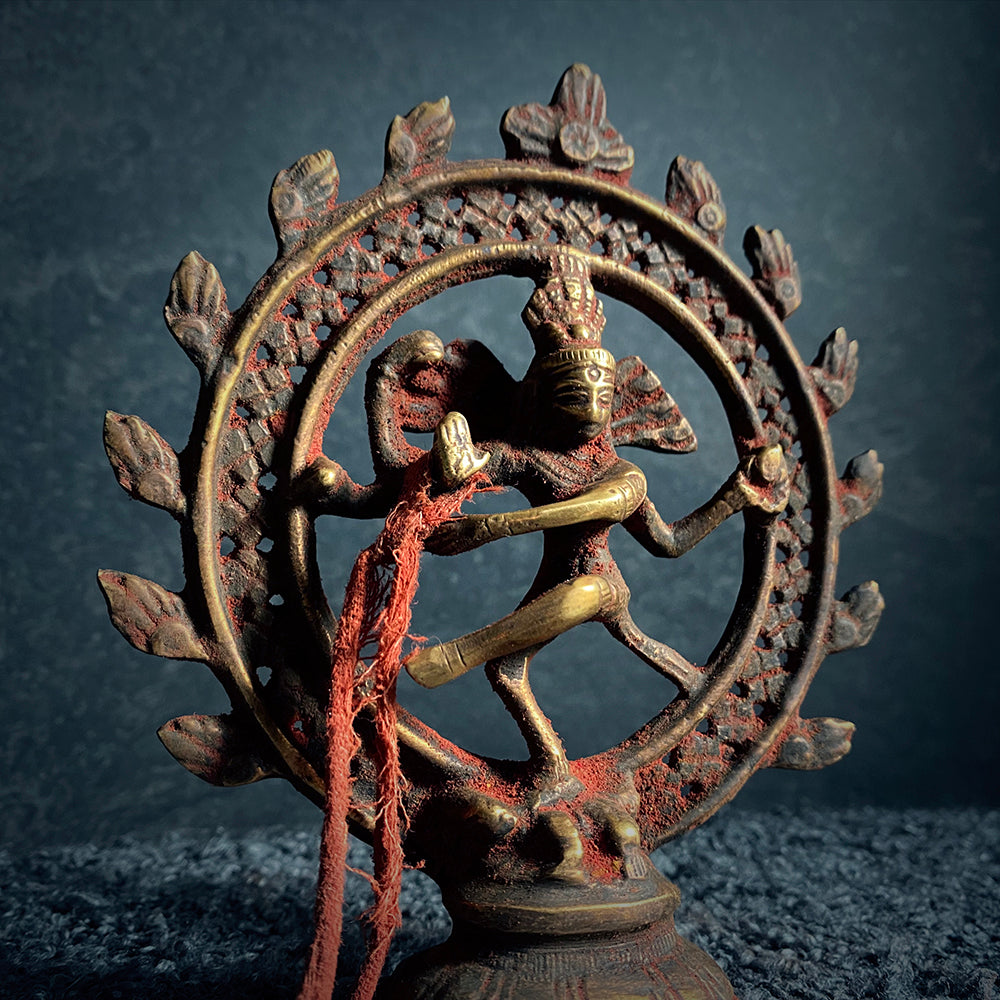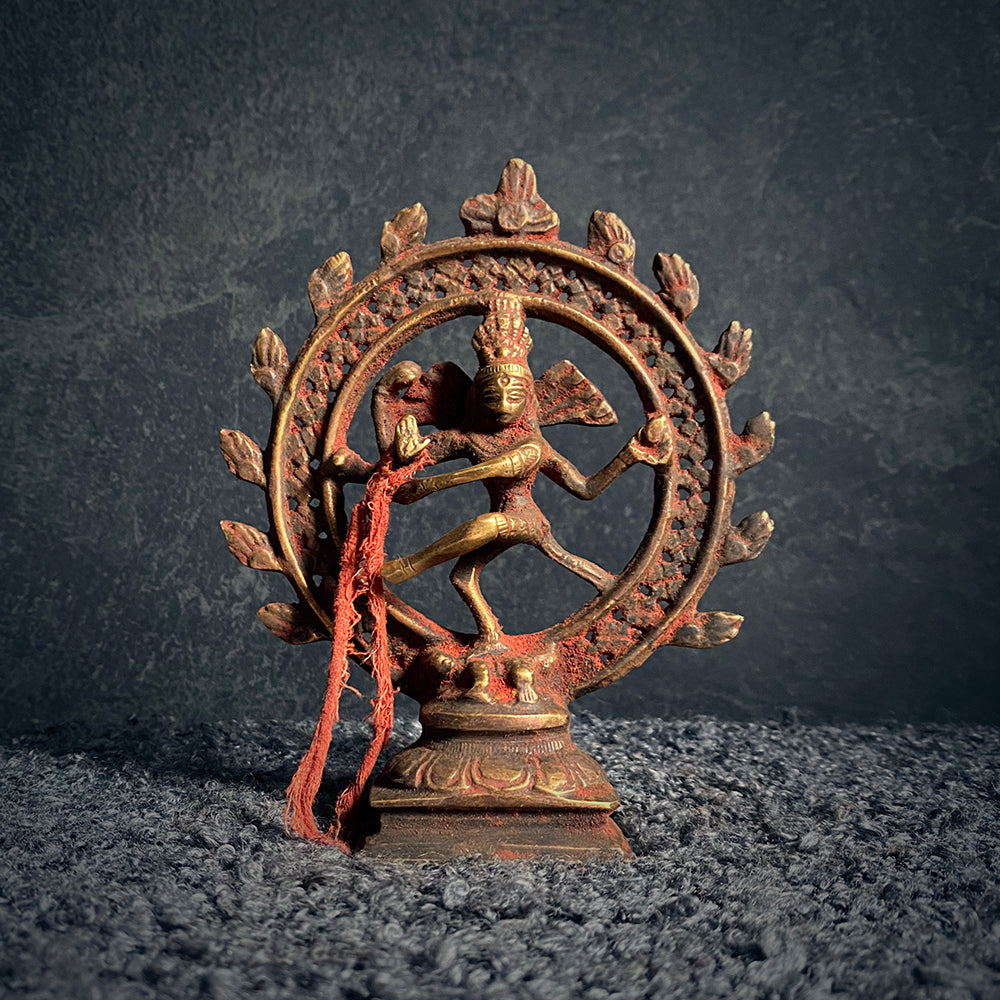TORVENIUS
SHIVA NATARAJA statue, aged bronze patina edition - RITUAL ITEM
Couldn't load pickup availability
Nataraja, the Hindu god Shiva in his form as the cosmic dancer, represented in metal or stone in many Shaivite temples, particularly in South India.
In the most common type of image, Shiva is shown with four arms and flying locks dancing on the figure of a dwarf, who is sometimes identified as Apasmara (a symbol of human ignorance; apasmara means “forgetfulness” or “heedlessness”). Shiva’s back right hand holds the damaru (hourglass-shaped drum); the front right hand is in the abhaya mudra (the “fear-not” gesture, made by holding the palm outward with fingers pointing up); the back left hand carries Agni (fire) in a vessel or in the palm of the hand; and the front left hand is held across his chest in the gajahasta (elephant-trunk) pose, with wrist limp and fingers pointed downward toward the uplifted left foot. The locks of Shiva’s hair stand out in several strands interspersed with flowers, a skull, a crescent moon, and the figure of Ganga (the Ganges River personified as a goddess). His figure is encircled by a ring of flames, the prabhamandala. In classic Sanskrit treatises on dance, this form, the most common representation of Nataraja, is called the bhujungatrasa (“trembling of the snake”).
In the Nataraja sculpture, Shiva is shown as the source of all movement within the cosmos and as the god whose doomsday dance, represented by the arch of flames, accompanies the dissolution of the universe at the end of an eon. His dance of creation is said to have been performed in Chidambaram (an important Shaiva centre in South India), a place that is identified with both the centre of the universe and the human heart. The gestures of the dance represent Shiva’s five activities (panchakritya): creation (symbolized by the drum), protection (by the “fear-not” pose of the hand), destruction (by the fire), embodiment (by the foot planted on the ground), and release (by the foot held aloft).
Approx 13 cm wide and 15 cm tall.
Ships worldwide from Sweden!
